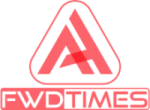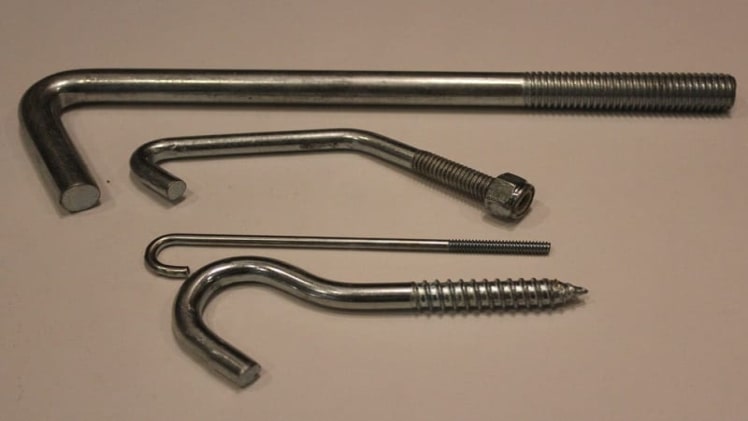A hook bolt is a durable metal fastener that looks like the top of a question mark. A hook bolt’s long, vertical part is frequently drilled and comes with one or two nuts fastened on. Hook bolts are a sort of anchor bolt that is often used to hold goods from walls. Most hook screws are composed of hammered steel material, which allows them to withstand enormous loads without twisting or cracking. Meanwhile, standard hook bolts feature an open end that allows for fast and simple removal and rehanging of goods.
What Exactly Are Hook Bolts?
Hook bolts are pack fasteners that are used for load-bearing purposes, such as wrap points cast into hard foundations bolts for permanent and temporary grips, or simply to hang goods from ceilings and walls. They may be long or short bolts with a curved hook on the end like a question mark.
Obviously, since this varies from an eyebolt in that the bending curve of the device’s tip isn’t attached back into itself, robust metal and the forging process are essential to maintaining the overall strength of the item. Bolts usually have enough room between them to allow for easy removal and refastening.
A hook bolt’s straight, pointed end is flat and does not slope like the end of a hook screw. Hook bolt placement often needs the digging of a guide hole. For increased stability, hook bolt screws are often attached to timber studs beneath drywall on a ceiling or wall. Ordinary and locking washers are widely used to maintain the junction in between hook bolt and a barrier from getting loose due to weight and movement. Some hook bolts are intended to be put into bolt anchors that extend into the wall to secure the hook.
On the labeling of hook bolts, most suppliers specify the weight capacity restrictions. On average, the greater the length of the hook fastener, the greater the amount of pressure it can hold. By distributing the weight of a large hanging item over a few distinct hook bolts, the risk of failure and injury is considerably decreased. Strong forces bridge the space between heavy hanging goods and hook bolts, reducing direct stress on the bolt for enhanced strength and safety. Hanging chairs are often sold with installation gear such as hooks, bolts, and high gauge springs.
Uses Of Hook Bolts
Hook bolts, which are essential in structural construction, guarantee that the load is equally dispersed over several bolts, significantly lowering the stress on each bolt. To keep the bolt in position, a fastener is frequently put into the wall or ceiling to secure the hook in location.
Types Of Fasteners
A fastener is a broad phrase that refers to anything that serves as a constraint for keeping items together or connecting to other objects. The following are the types of fasteners:
Bolts
Bolts are one of the most flexible architectural fasteners, having a variety of designs to accommodate a variety of components and strength requirements. These screws varied significantly in thread length, specification, and head shape, with diverse combinations of these qualities producing bolts with a variety of applications. They are often inserted with a hollow shaft and a matching nut or slotted mating element, and they are not angled like screws.
Because the language used to differentiate between bolt types is sometimes inconsistent and wrongly used interchangeably for screws, it is recommended to choose your bolts based on your project needs rather than the precise name stated on a supplier’s website.
Types of Bolts
The following are a variety of foundation bolts seen in different hardware shops:
Carriage bolts: Carriage bolts feature a recessed or domed crown with a rectangular bottom that prevents rotation after installation. They are often used with timber and bricks.
Flange bolts: Flange bolts are a type of hex head bolt that has an integrated flange that works as a wiper feature to distribute pressure better evenly.
Plow bolts: Some plow bolts, like carriage bolts, feature a square-shaped fasteners top. However, others have a domed shape. These bolts are suited for use in heavy-duty applications such as industrial machines.
Hex head/cap bolts: Hex head screws are identified by the hexagonal structure of their tips. They are part of a larger group of bolts that must be installed using a screwdriver. They are available in a range of diameters and insertion configurations. Hex Head Cap Screws feature finer tolerances and are the most popular kind of Hex Bolt.
Squarehead bolts: Like hex head bolts, are distinguished by their square head form. This head shape aids tools gripping, making installation simpler.
Socket Head Cap Screws/Allen Bolts: Socket head cap fasteners feature a slightly curved top surface with polished or incidence cylindrical sides. Forged heat-treated metal examples are extra strong fasteners with unique alloy formulas designed for the most severe industrial applications.
Conclusion
Installing a few strategically positioned hook bolts might provide additional storage and décor options in a house or company. A hook bolt is the kind of fastener used to anchor hanging plants and paintings. Hook bolts are affordable and adaptable, with hundreds of interior and exterior uses.

